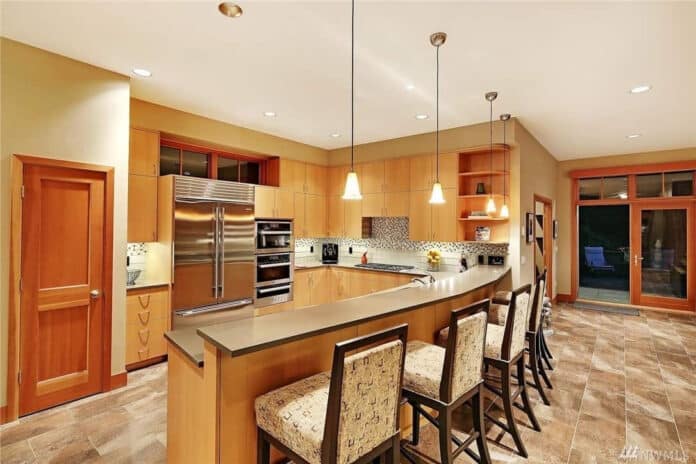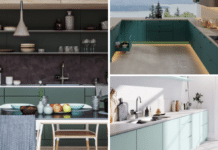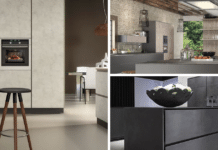Craftsman-style kitchens are one of the most recognizable styles. They feature rich wood finishes, paneling, and built-in storage. They often have an organic theme, using natural materials and a calming, earthy color scheme.
A craftsman-style kitchen design is a great choice for those homeowners who want a blend of classic and contemporary. The appeal for many buyers is the homey atmosphere the kitchen creates within the house.
What is a Craftsman-Style Kitchen
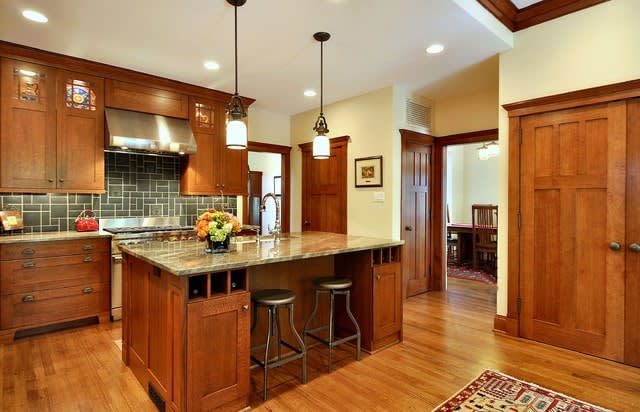
Craftsman-style kitchens are very recognizable. They use natural materials as much as possible, and they are designed with expert craftsmanship and well-proportioned and well-made elements.
This specific kitchen style often features detailed stonework, woodwork, and other details that reflect the skill of the craftsmen who made it.
Craftsman-style kitchens became popular in the early 20th century. The style emerged as a response to the mechanized methods of ornate furniture production that came with the Industrial Revolution.
Craftsman, also known as the Arts and Crafts Movement, emphasized natural materials made by carpenters and artisans. Authenticity, harmony, and simplicity are central to the movement. This style has recently gained popularity again.
Joe Berkowitz of JAB Design Group states, “The craftsman style is for the person who likes a natural home that’s not so ornate. And as the name suggests, it showcases fine craftsmanship.” He says the home interior has charming, custom details, but they are still understated.
Elements of Craftsman Kitchens
Strong lines are dominant in this design style. For instance, exposed beams, multi-paned windows, and paneled walls are common. Some of the other elements include:
- Earthy color schemes
- Built-in shelving
- Wood flooring and countertops
- Large hanging lights
- Artisan backsplash
These elements work together to create an organic yet functional design. They often extend from the kitchen into other areas of the home, especially the living space in an open-concept home.
Craftsman Style Kitchen Cabinets
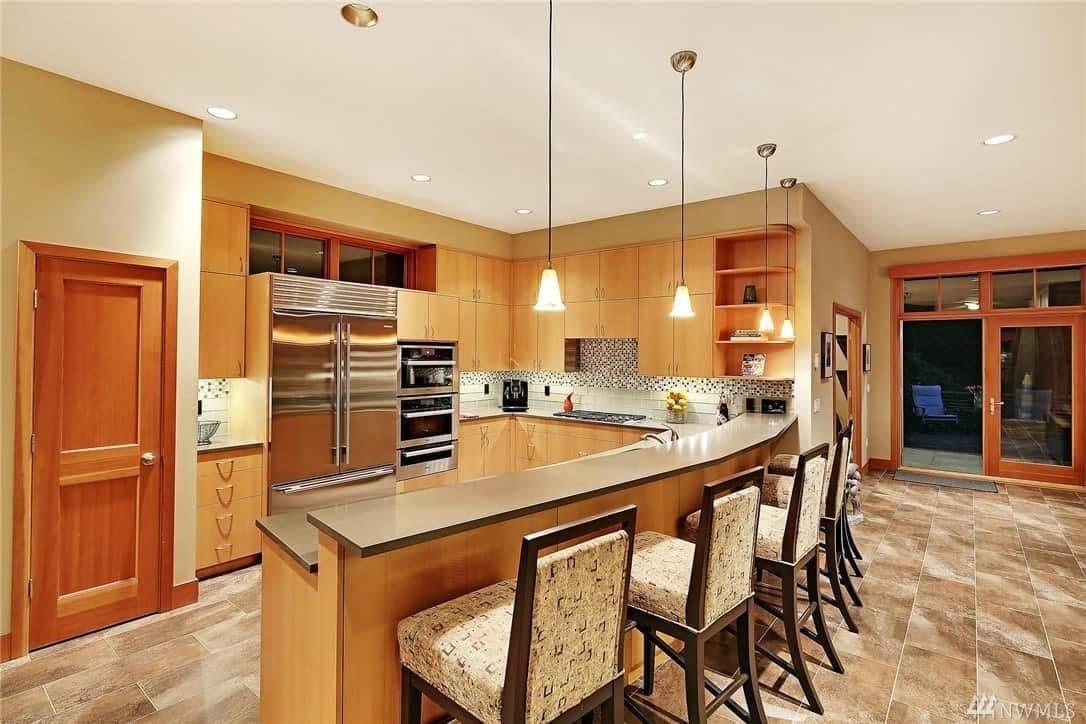
Straight, clean lines and minimal ornamentation define craftsman-style kitchen cabinets. Natural wood is the main feature of a craftsman kitchen. Therefore, cabinets are made of sturdy, durable wood.
While original Craftsman kitchens were custom-designed from scratch, the cost of achieving this look today can be high and out of many homeowners’ budgets.
Pre-made solid wood cabinets can work well in this kitchen, especially for homeowners who want this classic, high-quality look but within budget.
The cabinets in a craftsman kitchen carry on the traditional or antique design aesthetic, using natural materials but being fully functional. A recessed door or Shaker cabinet fits the craftsman design, and glass in the cabinet doors is also an option.
The cabinets are often made of birch, oak, cherry, or maple. The wood can be left in its natural state or stained, but some of the grain might be visible.
Gray cabinets are also an alternative for homeowners who want to keep a neutral color scheme without having an all-white kitchen. Similar cool or warm shades with the base gray give many options.
Craftsman Style Kitchen Countertops
There are several choices for countertop design. Stone, granite, or quartz in white or beige is commonly used.
Usually, the countertop color is white or beige. Dark colors should be avoided because they will make the kitchen more traditional.
Soapstone is an option for countertops as it is a durable, nonporous surface that oxidizes over time. It can be polished to a shine or left for a traditional matte finish. Soapstone and slate have been mined in the Appalachians for over 150 years.
The fact that Soapstone is locally sourced might appeal to many homeowners who want to use historically authentic materials.
Wood is another countertop option for a very natural, organic feel. Woods like black walnut, hard maple, and bamboo were top choices for original Craftsman kitchens. It can also be used as an accent for the kitchen island top.
Craftsman Style Kitchen Color Palette
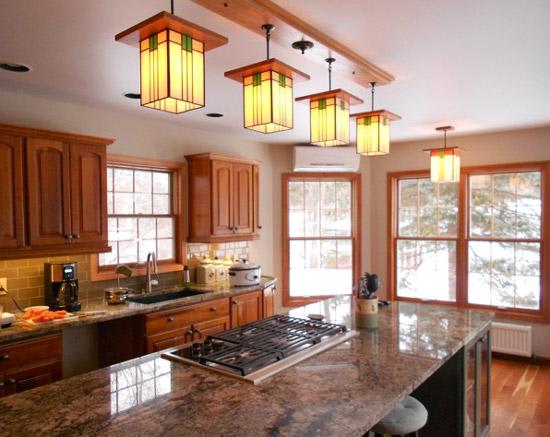
The goal of the craftsman movement was to appreciate fine workmanship and the beauty of nature, and the color palette reflects this.
The color scheme in this type of kitchen is based on warm, natural tones, including white, tan, beige, sage green, sky blue, gold, and earthy browns. Colors are muted and never bold or make a statement. White-painted wood is also common.
The color scheme might also include exposed wood, river rocks, or fireplace tile, so the wall color should complement any architectural details in the space. Warm wood finishes like oak, cherry, or maple are classics in a craftsman-style home.
Craftsman Style Kitchen Furniture
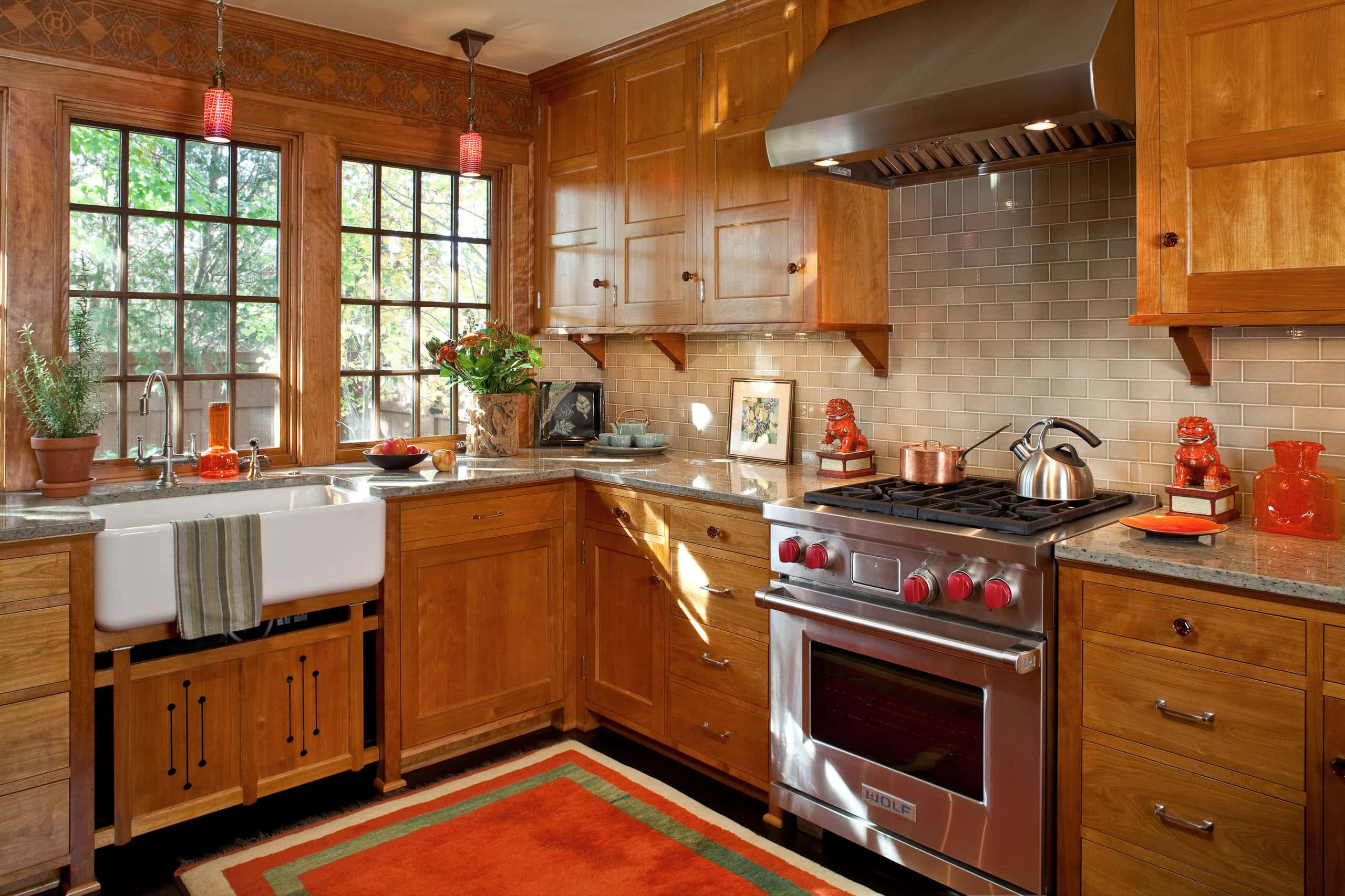
The furniture in this kitchen style features high-quality wood, sometimes made by hand, so the joints are visible. It is detailed and durable. Fabrics in the space, such as cushions, curtains, and tablecloths, can have a classic plaid or gingham print.
The kitchen might also feature an arts-and-crafts-style rug that combines the palette’s colors.
Craftsman Style Kitchen Breakfast Nook
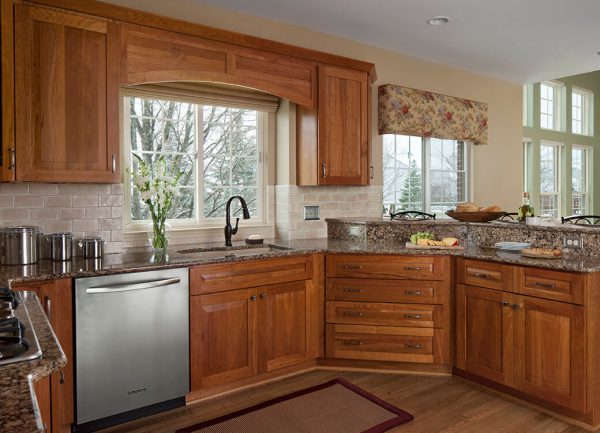
Oftentimes, craftsman kitchens have a breakfast nook for dining. The nook seats four to six people and usually has storage under the seat.
The nook can be tucked into an interior or exterior wall and can use space in the kitchen that does not affect upper cabinet storage. In smaller Craftsman homes, the nook can replace a formal dining room.
Craftsman Kitchen Island
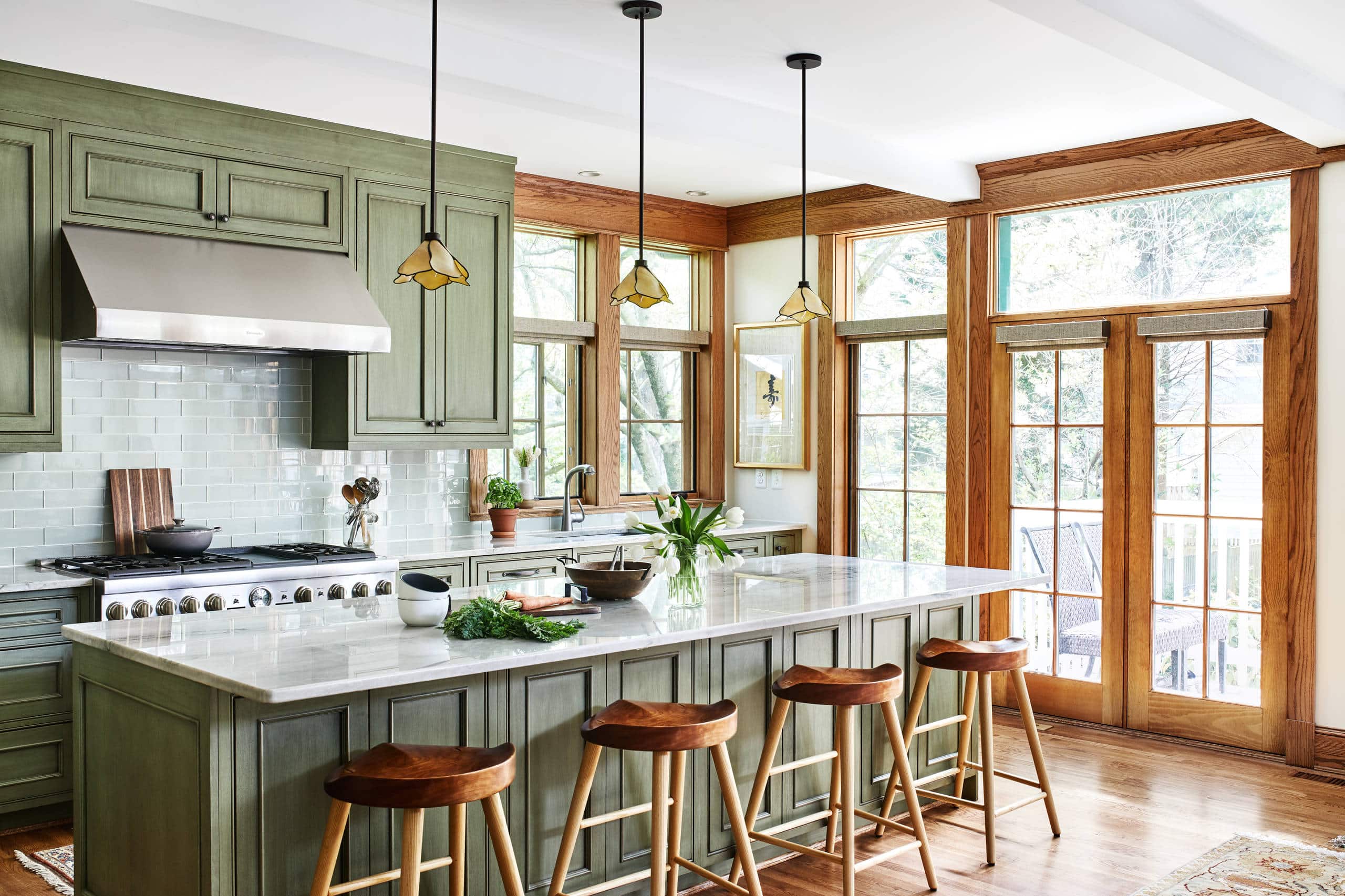
The island in a craftsman-style kitchen can be used to either further fit the space’s design or serve as a contrast piece.
For instance, an all-white kitchen with a bright green island or a contrasting countertop is better than what was used in the rest of the kitchen- like wood vs. quartz. The island and lighting above it can serve as a focal point for the kitchen.
Craftsman Kitchen Backsplash
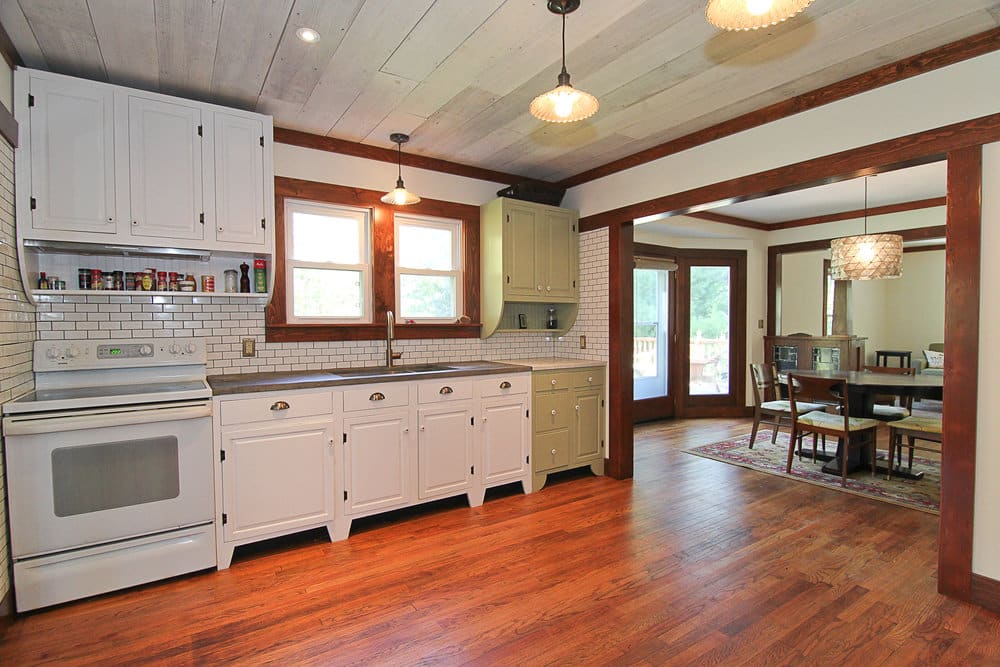
Backsplashes are a key element in adding color to the space. Despite the lack of ornamentation in this kitchen style, the backsplash is often highly crafted tile.
Earth tones in blue, gray, and green will complement the rest of the color scheme. Some homeowners prefer hand-painted tile depicting nature scenes to give the space a personalized feel.
In more rustic kitchens, imperfect and earthy tiles may be created with handmade molds. Since much of the space is finished in wood and stone, incorporating tile is a way to introduce color and texture to the space.
Natural stone can also be used for the backsplash. Slate has various colors and textures, and granite or soapstone has earthy colors that go with the rest of the décor.
Craftsman Style Kitchen Hardware
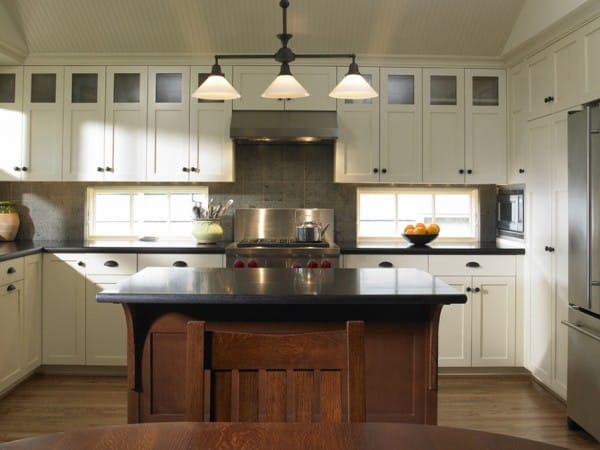
The hardware should match the authenticity of the craftsman style. Drawer pulls, cabinet knobs and other fixtures should take on a utilitarian look without much adornment. Heavy-duty, substantial, or even hammered hardware is often found in craftsman kitchens.
Pulls and knobs in a nickel finish speak to the style of the 1920’s. Chunky styles with dark or warm tones, such as bronze and antiqued brass, work well too. Hardware with a sheen should be avoided as it is more modern.
Craftsman Kitchen Lighting
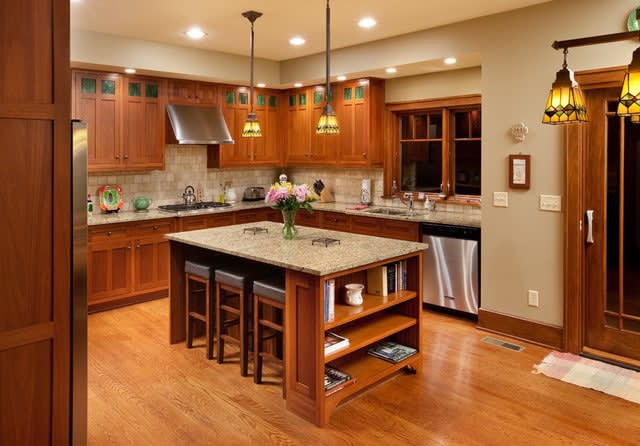
Natural light is important for the space. This type of design often has abundant windows to let in as much natural light as possible. Numerous double-hung, casement, and awning windows with wood trim can be found in these kitchens.
Glass is an essential element for the additional artificial lighting. Decorative glass with geometric shapes, dark lines, or solid colors is used. No recessed lighting is used; rather, pendant lighting or flush-mounted light fixtures are used to provide a warm feel.
Antique bronze, frosted glass, or Tiffany glass are all options, depending on the homeowner’s preference.
Another option is industrial or prairie-style lighting, which can become the kitchen’s focal point. The lighting can be more traditional or modern, depending on the homeowner’s preference.
Craftsman Style Kitchen Flooring
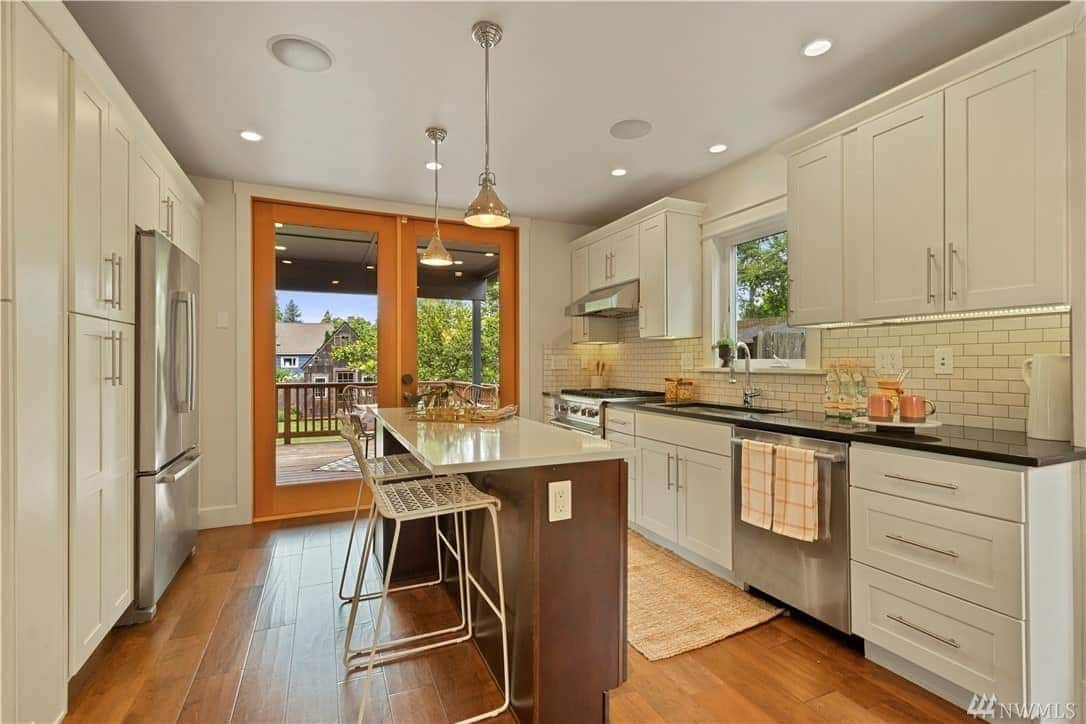
Hardwood floors define the craftsman style. Oak and maple are commonly chosen in this kind of kitchen. No matter what kind, the wood should be lustrous and rich.
If the homeowner does not want real wood in the kitchen, ceramic tile comes in realistic-looking wood planks that range in color from white to gray to brown.
Craftsman Style Kitchen Appliances
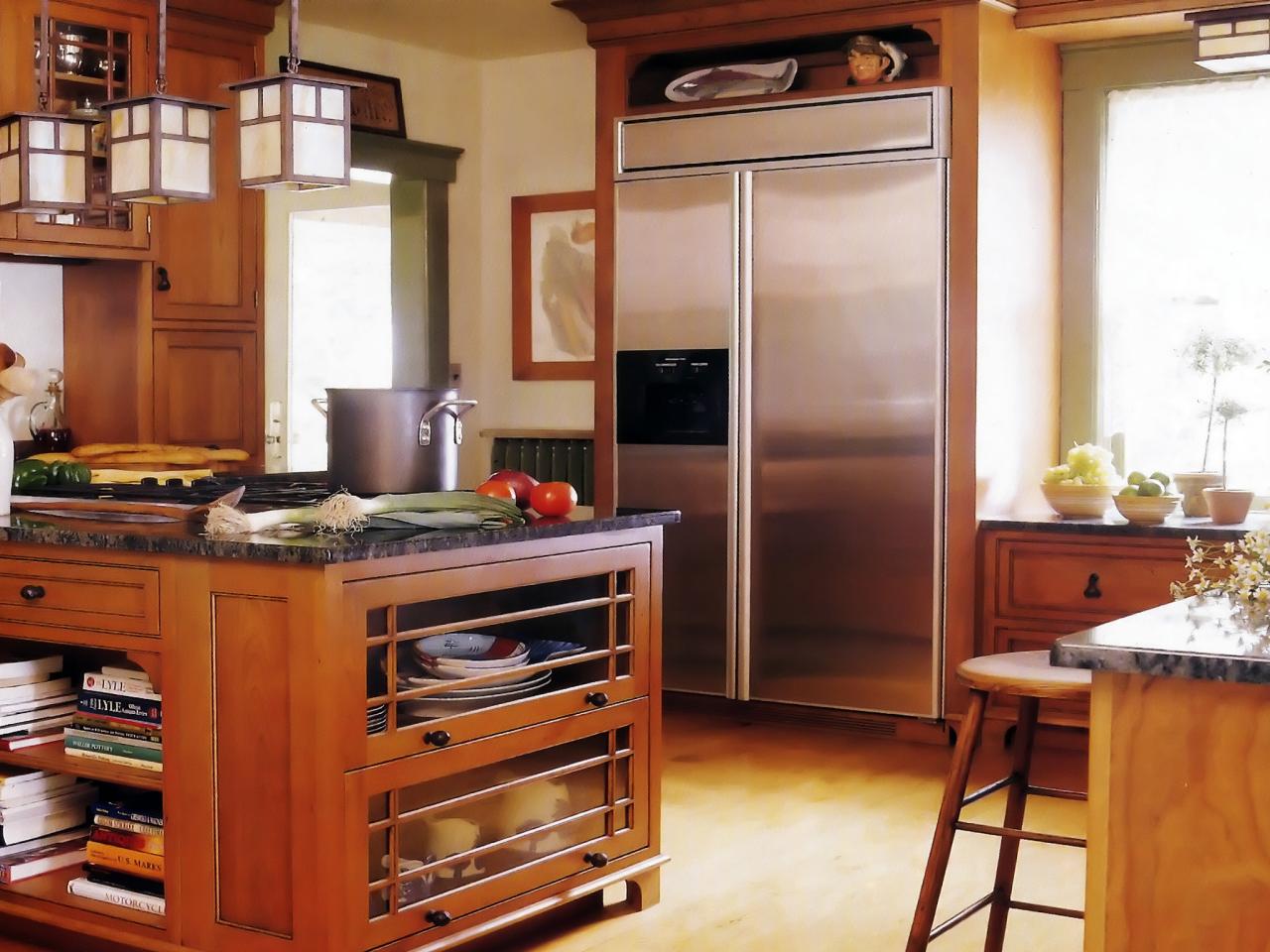
For some other kitchen styles, stainless steel is still the finish of choice for appliances. For craftsman kitchens, white or vintage appliances provide a more natural-looking alternative. Appliances can still have updated technology to make for an efficient kitchen—they just don’t have to look it!
Craftsman Style Kitchen Sink
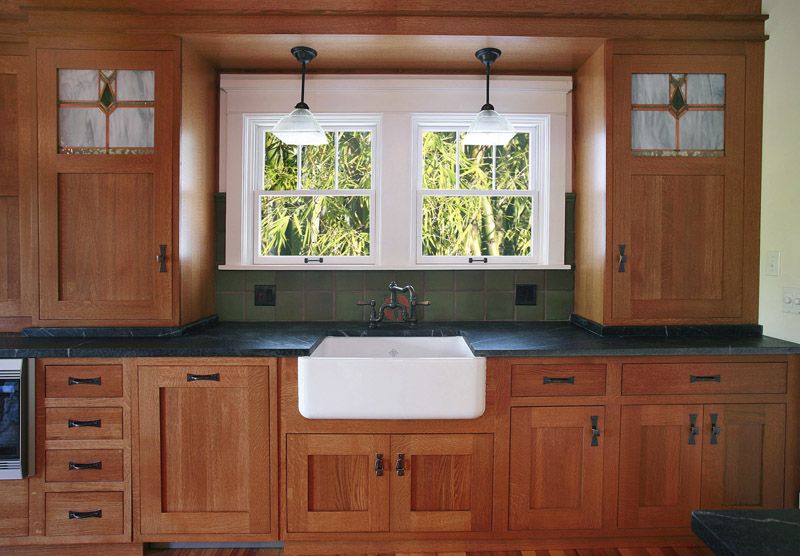
Vintage accents can be used on the sink. A deep farmhouse sink is functional yet rustic and is often used in a craftsman kitchen. The sink fixtures should be finished like the hardware to ensure consistency throughout the kitchen.
The kitchen’s use of copper gives it a charming, handcrafted look. Over time, the sink will develop a patina, adding to its rustic charm.
Craftsman Kitchen Trends 2025
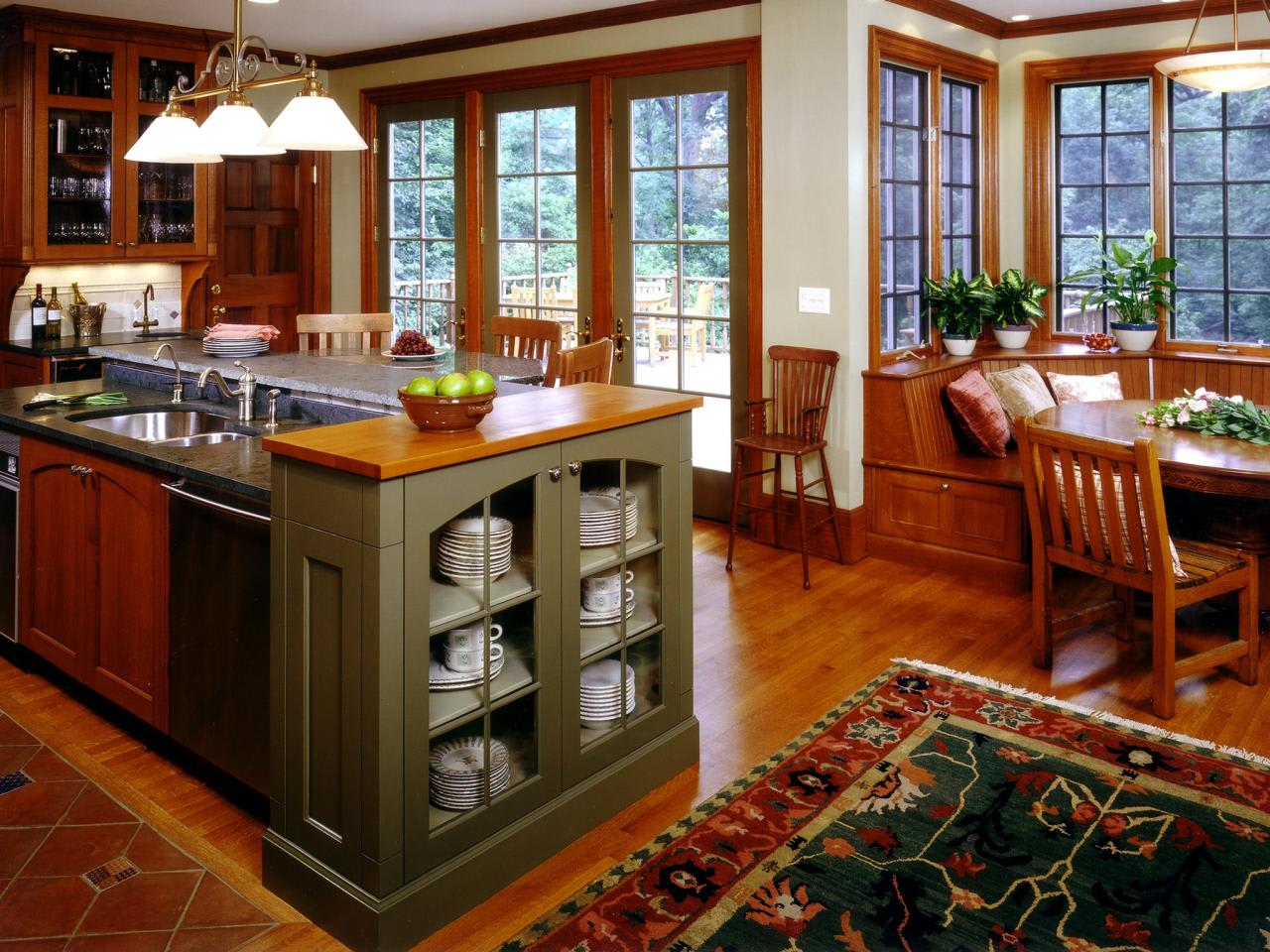
Slotted doors that create an individual panel look are starting to pop up in kitchen designs for the new year. This design, which consists of wooden pieces that slot into one another, adds to the vintage feel of a craftsman kitchen.
Another craftsman kitchen trend is the use of vintage hutches, furniture pieces that display china, tableware, and glassware. They give warmth and character to the kitchen and can either be painted an accent color or left in a natural, unfinished state.
A craftsman-style kitchen uses natural and organic materials for a simple, homey aesthetic. Homeowners will want their cabinet choice to reflect this simple design style.

